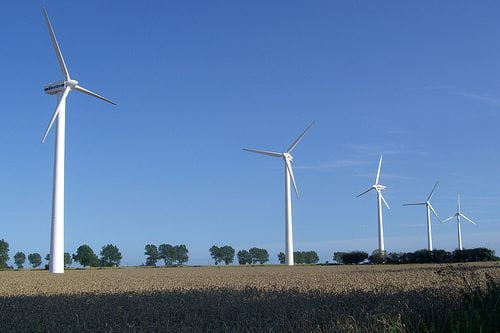

Economy
‘Energetically sustainable’ wind power can provide surplus clean electricity
Wind farms can provide enough surplus energy to develop energy storage technology capable of stockpiling three days’ worth of uninterrupted power, a new study has found.
Poor energy storage capability is one of the key obstacles to the rise of renewable energy. While wind and solar technologies provide limitless clean energy, they only generate power when the wind blows strong enough or the sun shines bright enough.
Today, the technology used to store surplus energy has relatively low capacity. This means other sources, such as fossil fuels, are still essential to meet energy demand.
In the new study, researchers from Stanford University investigated the “energetic cost” of manufacturing batteries and other storage technologies for the electrical grid.
Both wind turbines and solar photovoltaic (PV) installations now produce more energy than they consume.
The team sought to find out whether these energy sources produce enough energy to fuel their own growth and concurrently develop the necessary energy storage industry.
“Whenever you build a new technology, you have to invest a large amount of energy up front,” explained Michael Dale, a research associate at Stanford.
Dale and his colleagues found that the wind industry provides such a surplus of power that it can afford storage for three days of uninterrupted power.
“This suggests that the industry could deploy enough storage to cope with three-day lulls in wind, common to many weather systems, and still provide net electricity to society,” Dales said.
However, they also found that the solar industry can afford only about 24 hours of energy storage, as it takes more energy to manufacture solar panels than wind turbines.
“Our analysis shows that today’s wind industry, even with a large amount of grid-scale storage, is energetically sustainable,” Dale added.
“We found that the solar industry can also achieve sustainable storage capacity by reducing the amount of energy that goes into making solar photovoltaics.”
The researchers say that another advantage of wind over solar power is its return on investment.
“Within a few months, a wind turbine generates enough electricity to pay back all of the energy it took to build it,” study co-author Prof Sally Benson said.
“But some PVs have an energy payback time of almost two years. To sustainably support grid-scale storage will require continued reductions in the amount of fossil fuel used to manufacture photovoltaic cells.”
“People often ask, is storage a good or bad solution for intermittent renewable energy?” Benson added.
“That question turns out to be way too simplistic. It’s neither good nor bad. Although grid-scale storage of wind power might not be cost effective compared to buying power from the grid, it is energetically affordable, even with the wind industry growing at a double-digit pace.”
Further reading:
Tesla shares soar as Morgan Stanley predicts carmaker will ‘disrupt’ energy storage sector
Bill Gates-backed renewables storage battery begins production
Harvard energy storage battery could play ‘huge role’ in renewables transition
Sluggish energy storage developments could cost taxpayer billions


 Environment10 months ago
Environment10 months agoAre Polymer Banknotes: an Eco-Friendly Trend or a Groundswell?

 Environment11 months ago
Environment11 months agoEco-Friendly Home Improvements: Top 7 Upgrades for 2025

 Features9 months ago
Features9 months agoEco-Friendly Cryptocurrencies: Sustainable Investment Choices

 Features10 months ago
Features10 months agoEco-Friendly Crypto Traders Must Find the Right Exchange





























